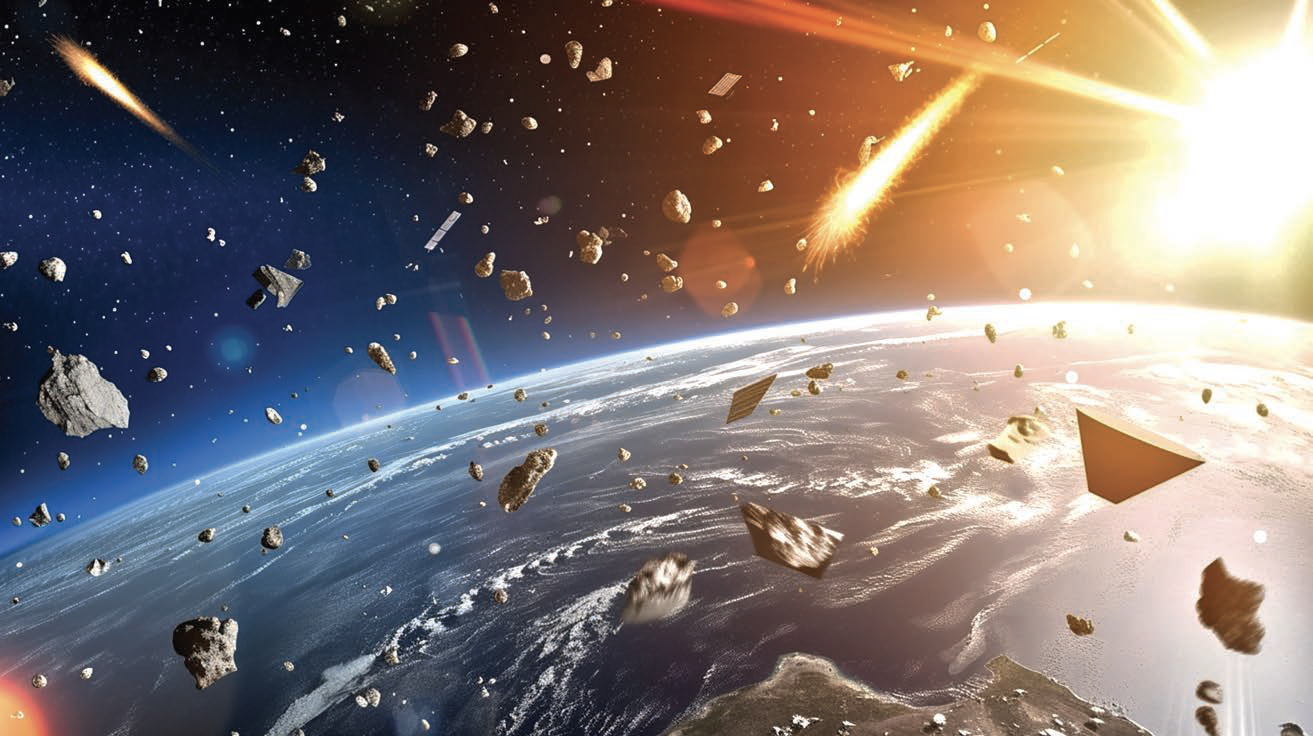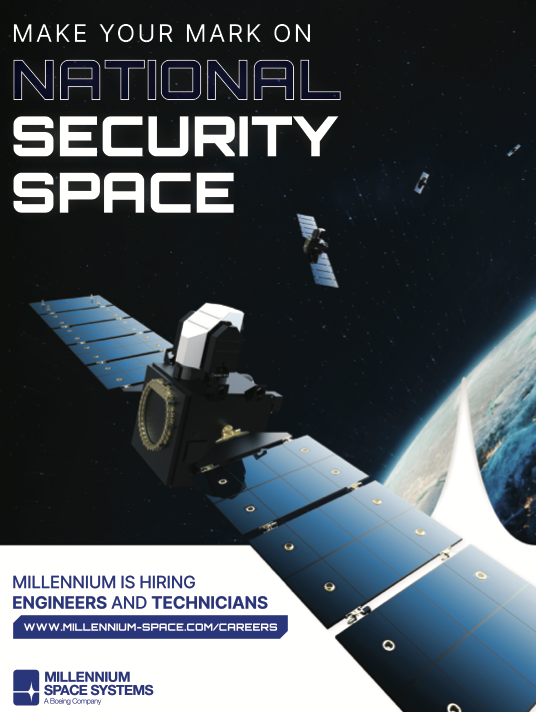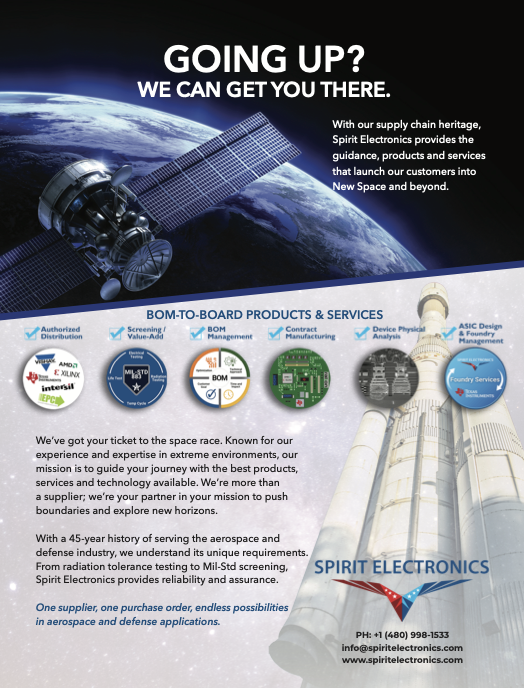With the commercialization of space accelerating, sustainability is at the forefront of many stakeholders’ minds. Already, there are around 9,000 active satellites on-orbit as well as some 2,500 satellites that are no longer functioning (data from European Space Agency (ESA)).

With the continued expansion and launch of mega constellations over the coming years, the number of deployed satellites is set to soar. The most recent edition of Euroconsult’s ‘Satellites to be built and launched’ report forecasts that an average of 2,800 satellites will be launched annually between 2023 and 2032, resulting in there being an estimated 28,800 satellites on-orbit by 2032. And it’s reasonable to infer that this increased activity in space will also create more orbital debris, adding to what is already a significant problem. ESA estimates that there are already more than one million pieces of debris over 1cm in size in Earth orbit.
As both the number of satellites on-orbit and the volume of debris grows, the risk of collision increases. Together, these factors have the potential to converge and create a perfect storm where space could eventually become too unsafe to use.
As operators know only too well, a collision event could potentially result in damage to satellites and loss of service. Not only that, a single collision could also result in thousands of new pieces of debris being created that would only serve to worsen the problem and increase risk levels for the entire industry.
It’s critical that we do everything we can to keep space safe and protect its long-term usability. For space to continue to meet our current and future needs, we need to prioritize space sustainability.
The accumulation of space debris resulting from non-operational satellites, spent rocket stages and various mission-related fragments, poses significant risks to space safety and sustainability. To tackle the issue, a dual approach is needed that prevents the creation of new debris while also developing ways to
In order to avoid debris generating, on-orbit collisions events, effective SSA systems capable of locating and tracking objects in space are a necessity. Additionally, satellites need to be carefully managed throughout their lifecycle to prevent avoidable debris from being created. While the launch phase has seen improvements with controlled re-entry and partial recovery methods, end-of-life disposal of satellites sometimes remains neglected.
Efforts to remove existing debris include missions such as ESA’s Clearspace-1, set to launch in 2025, which aims to demonstrate the feasibility of active debris removal by capturing and deorbiting a large piece of space debris using a robotic arm. Once captured, it will either safely re-enter Earth’s atmosphere where it will burn up or moved to save orbit where the population satellite is expected to be low.
There are also a number of private companies and research institutions exploring other innovative methods for debris removal, such as using lasers to nudge debris in order to alter their orbits, or deploying nets and harpoons to physically capture debris.
Deorbiting Strategies +
Satellite Life Span
Deorbiting strategies and satellite life span are important factors in space sustainability. Effectively deorbiting satellites at the end of their operational life ensures that defunct satellites are safely removed from orbit. This could be achieved either by a controlled re-entry into the Earth’s atmosphere where they will safely burn up, or by moving them to so called graveyard orbits, mitigating the risk of collision with other space assets. One potential approach is the use of drag-enhancing devices, such as deployable sails, which increase atmospheric drag and accelerate the deorbiting process.
Additionally, if we can extend the operational life of satellites, it would reduce the need for so many new satellites to be launched and help prevent the creation of new space debris. To accomplish this, viable methods to service, maintain and refuel satellites on-orbit are needed. Technological advancements in satellite design are also playing a crucial role in enhancing life span with innovations such as electric propulsion systems allowing for greater maneuverability and extended mission durations.
Governmental +
Intergovernmental
ActionAlthough it’s fair to say that governments around the world have been fairly slow to respond to the need for space sustainability by developing strategies and legislation, there have been some recent, notable developments.
ESA’s Zero Debris Charter is part of its ground-breaking initiative, the Zero Debris Approach, that aims to completely stop any new debris from being added to orbit by 2030. Twelve countries have signed up to the Charter, showing their commitment to contributing to the long-term sustainability of human activities in Earth orbit by reducing the likelihood of debris-generating events and improving end-of-life disposal. ESA has also signed the Charter as an intergovernmental organization.
In the United Kingom, the UK Space Agency (UKSA) is spearheading a range of new sustainability initiatives intended to deliver capabilities to track objects in orbit and reduce or remove debris. These initiatives include the Active Debris Removal Mission that is planned to launch in 2026 and aims to remove two, defunct ,UK-licensed satellites from LEO, using a refurbishable and refuellable craft to enable follow-on missions.
Other initiatives include funding provision to develop ways to refuel, service and manufacture satellites on-orbit in order to extend their life and reduce debris. It’s also funding the Earth and Space Sustainability Initiative (ESSI) which aims to review existing space sustainability standards covering the lifecycle of a satellite and all aspects of Space Traffic Management, carry out a gap analysis, and publish new standards to fill any gaps.
The U.S. released its National Orbital Debris Mitigation Plan in 2022, setting out its strategy for mitigating, tracking and remediation of debris. The orbital debris order adopted by the FCC reduced the 25 year deorbiting satellites rule for LEO to five years, to reduce the orbital population of post-mission satellites and improve flight safety. The first fine was issued by FCC to an operator in October of 2023 for failing to adhere to the order.
In April, NASA announced that the agency had published the first volume of an integrated Space Sustainability Strategy that places the emphasis on analyzing the problem, rather than focusing on the development of technologies to solve it. The strategy sets out six goals that NASA hopes to achieve through collaboration with the international space community.
Collaborative
Initiatives
A number of important collaborative initiatives are taking shape that are designed to promote sustainable use of outer space. The Space Safety Coalition (SSC), a coalition of companies, organizations, and government and industry stakeholders, has recently produced an updated version of its Best Practices for the Sustainability of Space Operation. The document is a
comprehensive set of best practice guidelines for stakeholders such as satellite operators, mission and constellation designers, spacecraft manufacturers and launch service providers to follow to help facilitate space sustainability.
Also important to mention is the Global Satellite Operators Associations’ (GSOA) publication of its Code of Conduct on Space Sustainability. Another best practice document, this time intended to monitor orbital debris, track operational spacecraft, promote space situational awareness, and minimize the threat of collision between spacecraft, has also been released.
Additionally, The World Economic Forum recently released the Space Industry Debris Mitigation Recommendations, which is a set of best practices directed at satellite operators, as well as insurance companies and national governments, and currently endorsed by about thirty industry players.
Another collaborative initiative is the Space Data Association (SDA), which is an industry-led association of more than 30 satellite operators working together to promote industry best practices for space safety and space debris mitigation. Operators can share data to participate in, and benefit from, effective space situational awareness through the SDA’s Space Traffic Coordination platform,
Prioritizing
SustainabilityAs the space industry continues to grow, prioritizing sustainability is not just a choice but an absolute necessity. While the recent governmental, intergovernmental and industry-led initiatives are indeed encouraging, there is still have a long way to go.
Sustainability is an incredibly complex issue, with many interconnected factors needing to be simultaneously addressed. As such, the success of sustainability efforts relies on collaboration, as well as engagement and commitment from all stakeholders.

Joe Chan
Although it’s still early in terms of getting to where the industry needs to be, sustainability seems to be gaining traction. We can only hope that we are at least on the correct path to ensuring that space remains a viable resource for generations to come.
www.space-data.org
Author Joe Chan is the Chairman and Executive Director of the Space Data Association. He is the Director of Flight Dynamics at Intelsat where he oversees the FDS operation and engineering of more than 70 GEO satellites that Intelsat currently operates. Mr. Chan has been with Intelsat for 24 years. Prior to joining Intelsat he worked at Goddard Space Flight center on the TOPEX/POSEIDON and Mars Observer projects.



